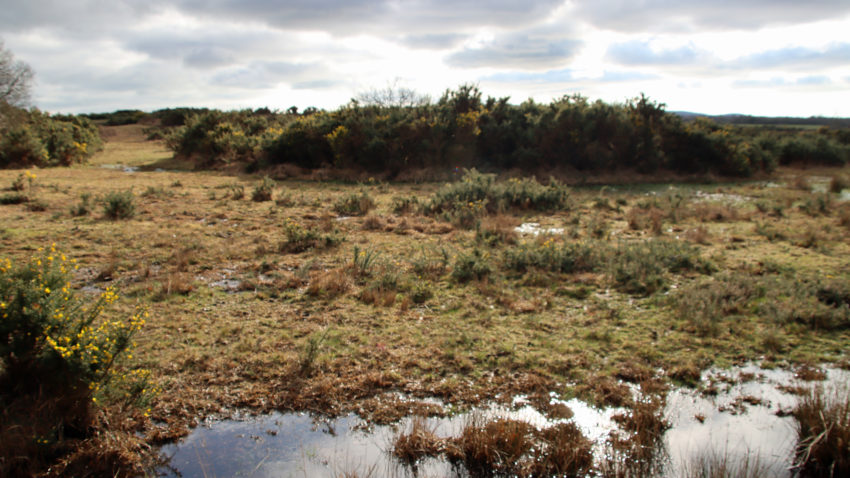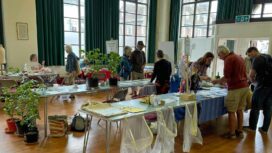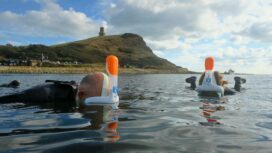Cattle, ponies and pigs are to be allowed to freely roam across an extended area of heathland between Stoborough, Corfe Castle and Arne near Wareham as part of a project to create a more natural and diverse habitat for wildlife.
As in the New Forest in Hampshire, animals will graze and trample across the area, limiting the growth of plants like heather and purple moor grass, helping to naturally restore the landscape.

It was once a common sight to see cattle grazing freely in Purbeck
Pigs will be allowed to roam for the first time
Cattle and ponies are already a common sight on Hartland Moor near Wareham but now the area where they can inhabit will double in size. As part of the Purbeck wilder grazing project, pigs will be allowed to roam for the first time in recent history.
This type of grazing system used to be much more common and is aimed at mimicking what happened when wild boar and aurochs – wild cattle, used to roam England. This in turn will help declining species of rare insects, reptiles and flowers to repopulate the land.
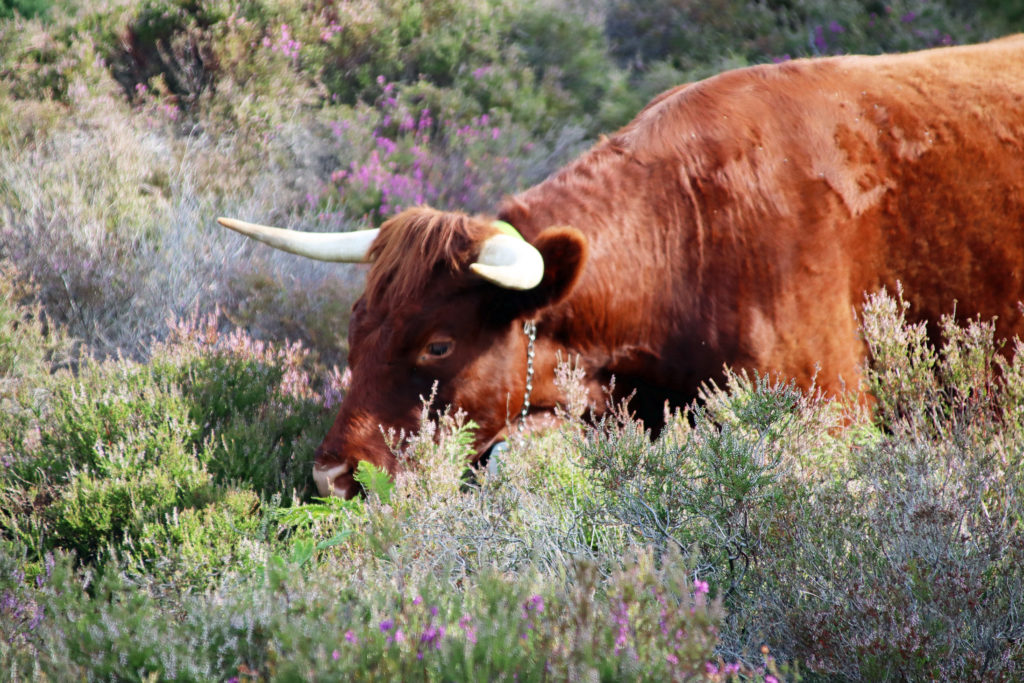
This Red Devon cow munches on the Purple Moor Grass helping to keep it under control
Seven new cattle grids
In order to keep the animals within the heathland, seven new cattle grids will be installed by Dorset Council highways team, starting at the end of August 2021.
Landowners across the Purbeck Heaths include the National Trust and RSPB Arne who share a boundary.

Heathland near Arne
“Unleashing their power to create a dynamic mosaic of habitats”
David Brown, landscape partnerships manager with the National Trust, said
“It’s incredibly exciting to see plans that we have worked on for very many years come to fruition.
“Cattle, ponies and pigs have a unique impact on their environment and by giving them free range across a large landscape, we will be unleashing their power to create a dynamic mosaic of habitats as they trample, root, wallow and graze.”
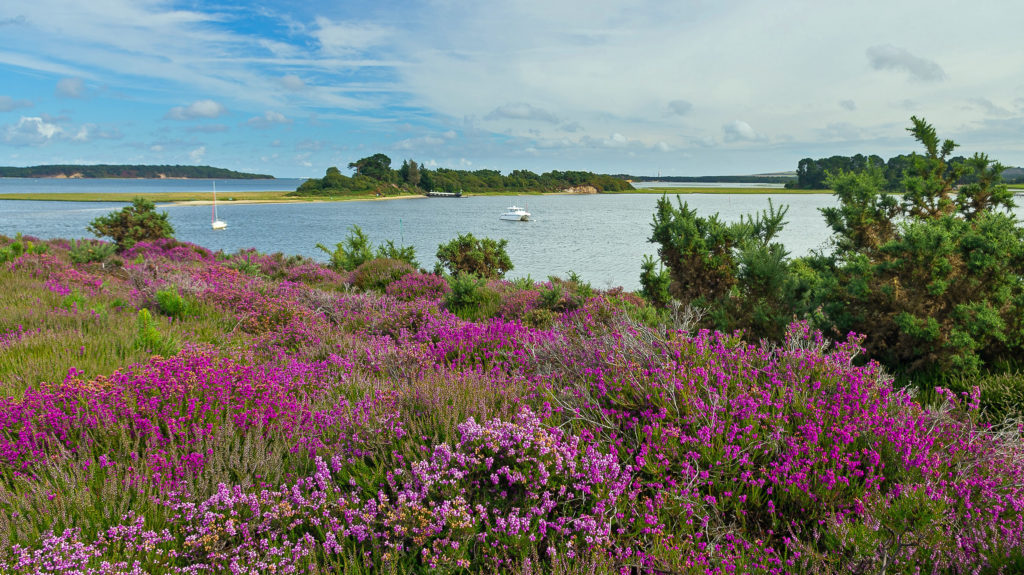
Arne heathland looking over to Poole Harbour
“Incredible landscape for people to visit”
Peter Robertson, senior sites manager at RSPB Arne added:
“Nature doesn’t respect boundaries and we’re excited about the opportunity to create such a significant, joined up landscape for wildlife. It will also be an incredible landscape for people to visit and enjoy and to be able to see how it changes and evolves over time.”
This grazing scheme is part funded by Wytch Farm in Purbeck in return for a planning agreement to extract oil and part funded by the government-backed Green Recovery Challenge Fund.

Purple Moor Grass grows quickly and needs to be cut back or grazed to prevent it taking over
A step change in nature conservation following the Lawton Review
The introduction of grazing animals across a wider landscape is part of a step change in nature conservation following the Lawton Review in 2010. This concluded that wildlife sites, despite their diversity, did not comprise a coherent and resilient ecological network.
It found that despite the designation of protected sites and nature reserves over the last 100 years, wildlife was declining around the world. This has prompted moves to connect whole landscapes on a much bigger scale and in a more natural way.
Countryside Manager for the National Trust in Purbeck, Mark Singleton said:
“We shouldn’t be having to manage our natural environment with carbon producing mechanical diggers and chainsaws. We can bring back natural processes into the landscape and allow animals, just like they did in the past, to do the work for us.”
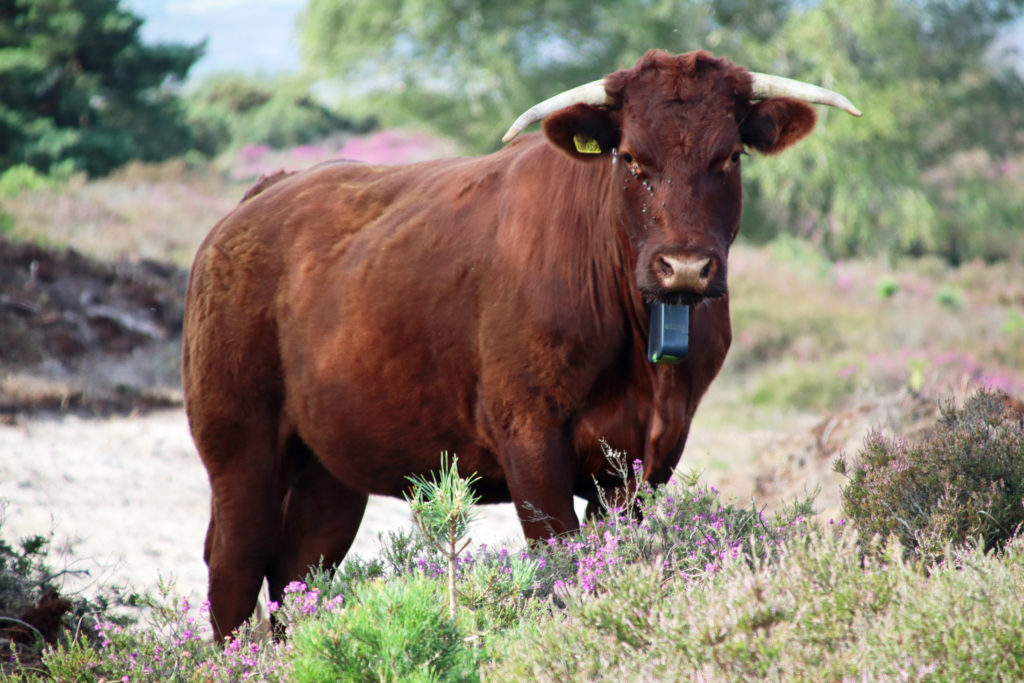

The herd of cattle in Studland
The Dynamic Dunescape project in Studland
In a separate project in Purbeck but with a similar ethos, this is exactly what’s happening with great success.
The introduction of Red Devon cattle to the Studland sand dunes is helping reduce the amount of purple moor grass that threatens to colonise the dunes, reducing the sandy habitat for beach-loving plants and creatures like the sand lizard.
The Dynamic Dunescape project reintroduced grazing cattle at the beginning of June 2021 and it has worked so successfully that the team are looking to more than double the herd to 20 cows for next year. It was back in the 1930s when the sand dunes were last grazed by cattle.

One of the cows in Studland wearing a solar panelled GPS collar
New virtual fencing technology
While the Purbeck Heath project is using conventional means to keep animals straying too far with fences and cattle grids, the cattle on the dunes are being kept safe by new Bluetooth technology.
The virtual fencing technology is a way to keep livestock enclosed using a digital boundary on a phone app.
The cattle are wearing solar panelled GPS collars, which play a tune to alert the animals when they approach the invisible fence line. If they cross it, the collar produces a small electric pulse – a fraction of a traditional electric fence.
The cows have quickly learnt to turn away when they hear the tune, keeping them enclosed virtually. However to ensure the safety of people and cattle, the National Trust has also installed a back-up fence with access gates along the busy Ferry Road.
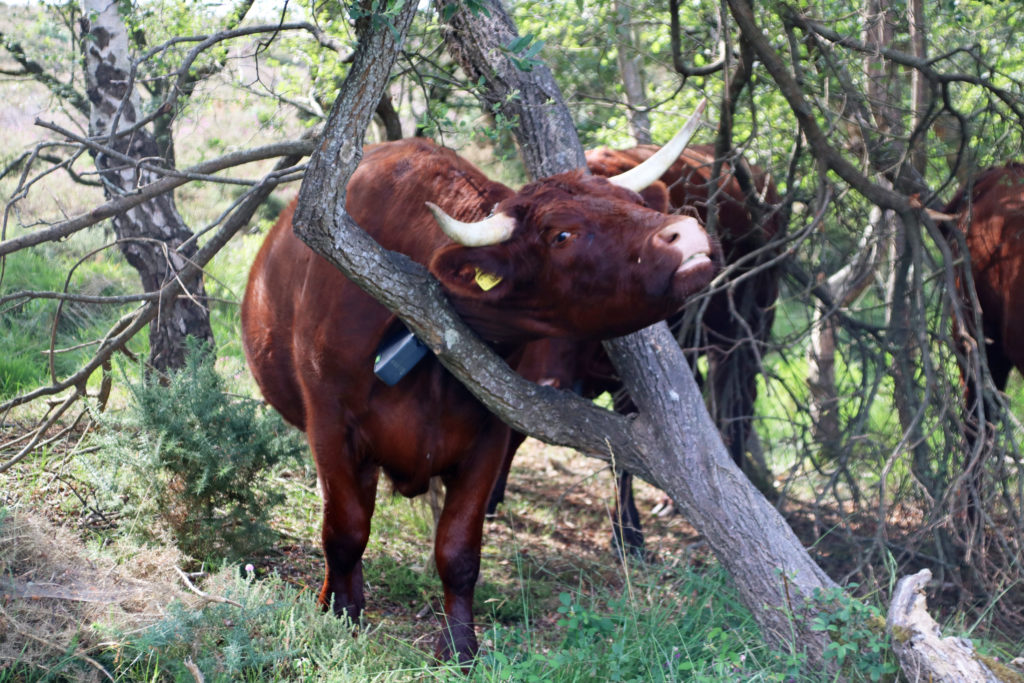

Sally Wallington, Dynamic Dunescapes project officer for the National Trust, is able to check on the cattle via an app on her phone
“Looking to expand the herd for next year”
Sally Wallington, Dynamic Dunescapes project officer said:
“I can keep an eye on where the herd is via the app on my phone and now we’re starting to see where they like to explore and where they like to sleep at night. However the phone isn’t a substitute for proper monitoring so they’re also checked daily by a grazier.
“We’re really pleased how the trial has gone and so definitely looking to expand the herd for next year.”

Julia Galbenu, the Dynamic Dunescapes engagement officer for the National Trust
“It’s for everyone to be part of this project”
Working with Sally is Julia Galbenu, the project’s engagement officer. She added:
“Everyone we’ve spoken to has been really positive about the reintroduction of the cattle in Studland with many really thankful for the work to help protect the environment.
“Kids have really loved it and we’ve had students from the local schools, colleges and universities all helping to collect valuable data. Children really are the most environmentally aware and we don’t want them to feel like visitors but to feel that this is their local project – their story. It’s for everyone to be part of this.”
The Dynamic Dunescapes project is funded by the National Lottery Heritage Fund and the EU LIFE Programme.
